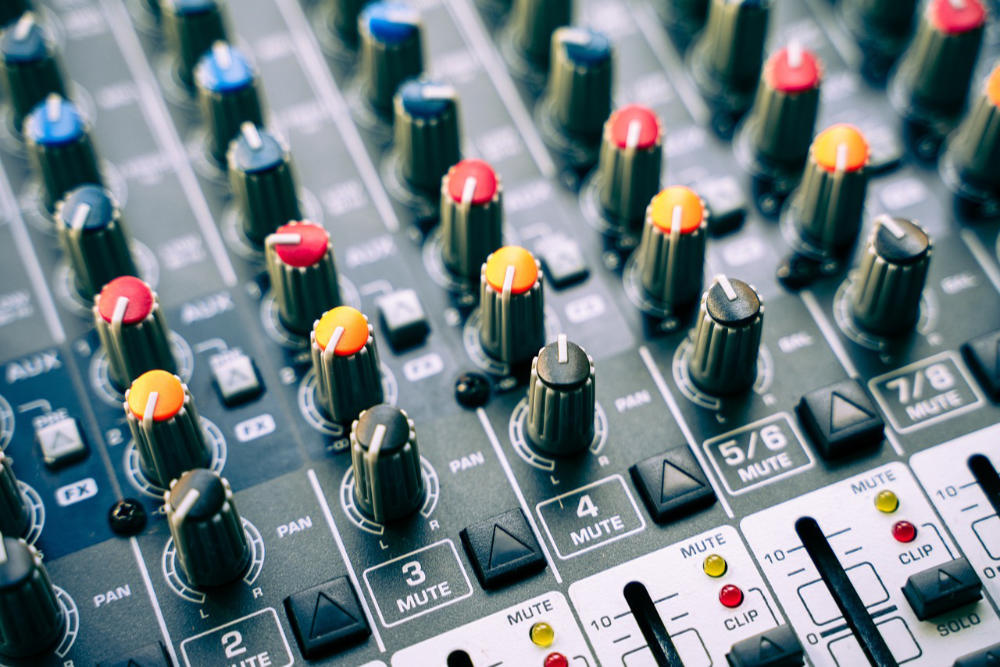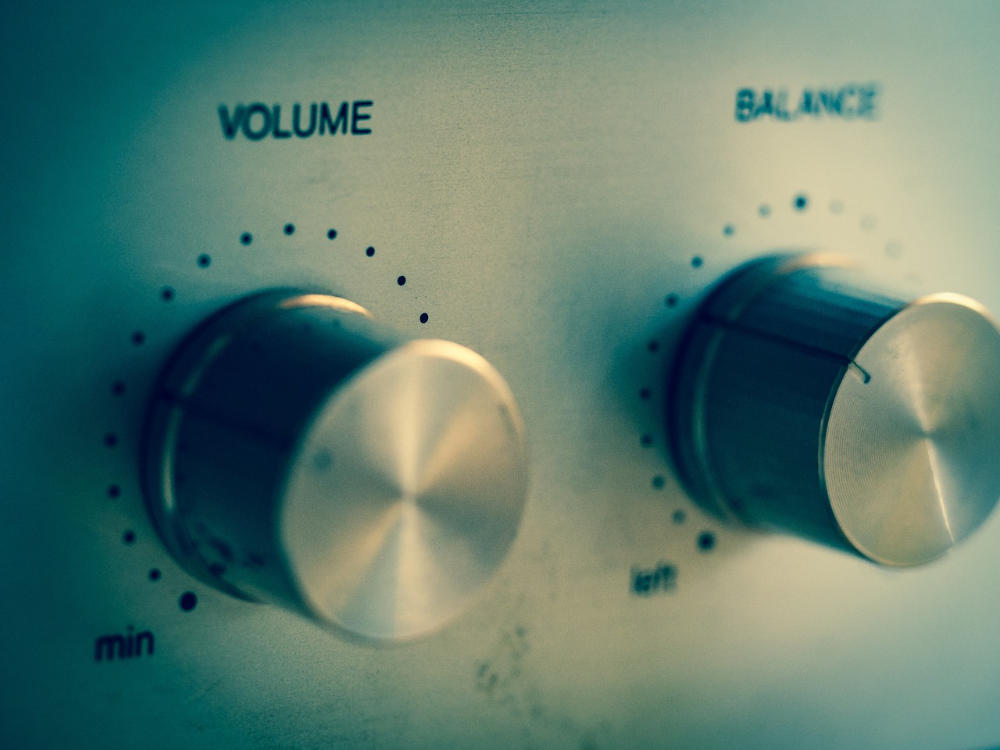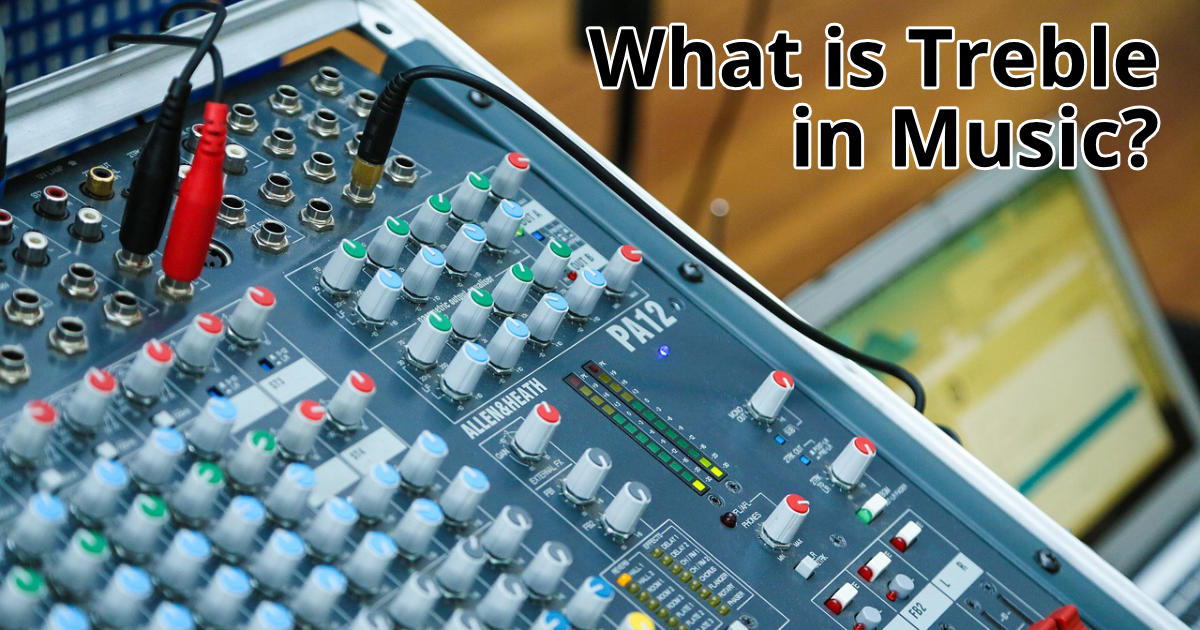Estimated reading time: 8 minutes
Hey music lovers! Ever found yourself nodding along to a tune, tapping your foot, but not quite sure what makes it all click? Let’s talk about one of the unsung heroes of music that gives it that sparkle – treble. We’re not diving into complex theories; we’re keeping it simple. Think of treble as the glitter on the canvas of music. It’s what makes melodies shine and harmonies shimmer. But what is treble in music, and why does it matter so much? Stick with me, and we’ll explore the high notes of this musical element.
Table of contents
- What is treble in music?
- Understanding the treble range: Frequencies, sound quality, and settings
- The role of treble in the music genres
- The difference between treble and bass frequencies
- The role of mid-range frequencies in music
- Understanding the treble clef and treble notes
- Musical Instruments: High-pitched sounds vs Bass sounds
- How treble affects the human voice in music
- The influence of treble on classical music
- How guitar riffs utilize treble frequencies
- The effect of treble on sound quality: Bright sound vs Harsh sound
- Hear the Differences Between Bass and Treble
- Conclusion: The crucial role of treble in music.
- FAQs
What is treble in music?
So, what is treble in music? In plain terms, treble refers to the higher end of the sound spectrum in music – the part that gives tunes their brightness and clarity. When you’re jamming to your favorite song, the treble is what makes the singer’s voice crisp and lets those guitar riffs really cut through the mix. It’s a vital ingredient that, when balanced just right, makes music feel alive and kicking.
Understanding the treble range: Frequencies, sound quality, and settings
The treble range is all about frequencies. Frequencies are like the colors in a painting – each one adds a different shade to the sound we hear. For treble, we’re looking at the higher frequencies, usually from around 2,000 Hz to 20,000 Hz. Sound quality in the treble range can be described as bright when it’s smooth and controlled, but it can quickly turn harsh if it’s too intense or unbalanced. As for settings, whether you’re tweaking your car stereo or a professional mixing desk, the treble knobs or sliders help you adjust how much of these high frequencies you’re hearing.
| Aspect | Description |
|---|---|
| Frequencies | High-end spectrum, typically 2,000 Hz to 20,000 Hz. |
| Sound Quality | Bright and clear when balanced, can become harsh if intense or unbalanced. |
| Settings | Adjusted using treble knobs/sliders on audio devices to control high-frequency output. |
The role of treble in the music genres
Treble isn’t just a one-trick pony; it plays a diverse role across different music genres. In classical music, it brings out the delicate details in a violin’s melody. In rock, it lets those electric guitar solos scream. And in pop, it adds that ear-catching sparkle to hooks that you can’t get out of your head. Each genre uses treble in its own unique way to communicate with us, the listeners, and evoke different emotions.
The difference between treble and bass frequencies
Now, let’s talk contrast. Treble and bass frequencies are like the two ends of a seesaw. While treble covers the high-end, bass is all about that low-end rumble – the kind that you feel in your chest at a live concert. They work together to create a full range of sound. Too much treble without enough bass can sound thin, while too much bass can overpower and muddy the mix.
| Aspect | Treble Frequencies | Bass Frequencies |
|---|---|---|
| Frequency Range | Higher end of the spectrum, typically 2,000 Hz to 20,000 Hz. | Lower end of the spectrum, typically 20 Hz to 250 Hz. |
| Characteristic | Contributes brightness and clarity to sound. | Provides depth and richness to sound. |
| Instruments | Instruments like violins, flutes, and trumpets produce treble frequencies. | Instruments like bass guitars, tubas, and kick drums produce bass frequencies. |
| Role in Music | Enhances melody and adds sparkle to music. | Provides foundation and depth to music. |
The role of mid-range frequencies in music
Caught in the middle are the mid-range frequencies. These are the workhorse frequencies where a lot of the action happens – think of the human voice, rhythm guitars, and snare drums. Mid frequencies are crucial because they bridge the gap between treble and bass, ensuring there’s a natural flow in the music. They’re essential for creating warmth and presence in a song.

Understanding the treble clef and treble notes
When it comes to reading music, the treble clef is king for high notes. It’s that fancy, swirly symbol at the beginning of the staff, signaling that the notes on the lines and spaces are going to be in the higher pitch range. Treble notes are the ones that often carry the melody because they stand out over the harmonies and rhythms that are happening in the bass and mid ranges.
Musical Instruments: High-pitched sounds vs Bass sounds
In the orchestra of musical instruments, each has its role. High-pitched sounds come from instruments like flutes, violins, and trumpets. They sing out above the rest with their treble-heavy voices. On the flip side, bass sounds are the domain of instruments like bass guitars, tubas, and kick drums. They lay down the foundation with their lower pitch range. It’s this combination of high and low that makes music so varied and interesting.
| Pitch | High-Pitched Sounds | Bass Sounds |
|---|---|---|
| Examples | Violins, Flutes, Trumpets | Bass Guitars, Tubas, Kick Drums |
| Role | Stand out with treble-heavy voices | Lay down foundation with lower pitch |
| Function | Carry melodies | Provide rhythmic and harmonic support |
How treble affects the human voice in music
Treble has a big impact on the human voice in music. A singer’s ability to hit those high notes with clarity and control can really make a performance stand out. It’s not just about reaching the notes; it’s about how treble frequencies carry the emotion and nuance in a singer’s voice, helping it to connect with the audience on a deeper level.
| Aspect | Description |
|---|---|
| Clarity | Treble frequencies enhance clarity and articulation in high notes. |
| Emotion | High treble frequencies can convey emotions and nuances in a singer’s voice. |
| Connection | Clear treble allows the singer’s voice to connect with the audience on a deeper level. |
| Impact | Well-controlled treble adds dimension and expressiveness to vocal performances. |
The influence of treble on classical music
Classical music and treble are old friends. In a symphony, the treble frequencies often carry the main themes while the lower strings and brass provide the rich, harmonic backdrop. Think of treble as the storyteller in classical music – it’s where a lot of the drama and expression lie, allowing composers to convey their most intricate musical ideas.
How guitar riffs utilize treble frequencies
Guitar riffs and treble frequencies are a match made in rock heaven. A well-crafted guitar riff uses treble to cut through the mix, grabbing our attention and often driving the entire song. It’s that sizzling sound of the guitar strings that gives a riff its character and bite, making our favorite rock tunes so memorable.

The effect of treble on sound quality: Bright sound vs Harsh sound
Treble can be a double-edged sword when it comes to sound quality. When it’s balanced just right, we get a bright sound that’s lively and engaging. But if the treble is too pronounced, it can lead to a harsh sound that’s tiring to listen to. It’s all about finding that sweet spot where the treble complements the music rather than dominating it.
| Aspect | Bright Sound | Harsh Sound |
|---|---|---|
| Description | Lively and engaging, with clarity and sparkle. | Fatiguing and uncomfortable, with excessive sharpness. |
| Characteristics | Balanced treble frequencies complement the music. | Overemphasis on treble frequencies overwhelms other elements. |
| Impact | Enhances the overall listening experience. | Degrades the listening experience, causing discomfort. |
Hear the Differences Between Bass and Treble
In the video below you can hear a song in the original, with treble and with bass. You can hear the difference immediately.
Conclusion: The crucial role of treble in music.
So, there you have it – a whistle-stop tour of treble in music. It’s clear that treble plays a crucial role in how we experience music. It adds dimension, clarity, and emotion to our favorite tunes, and without it, music would lose much of its vibrancy. Next time you’re listening to a song, take a moment to appreciate the high notes that are working hard to make the music sparkle.
Remember, treble isn’t just a technical term; it’s a key ingredient that makes our musical experiences richer. Whether you’re a casual listener or a hardcore audiophile, taking the time to understand what treble is in music can deepen your appreciation for the art form. Keep tuning into those high notes, and let the music take you higher!
Related Posts
- What is an Equalizer and which types of EQ exist?
- What are the best EQ plugins on the market right now?
- The Beginner’s Guide on How to EQ Vocals for Stellar Sound
- What is a Reese Bass? Unraveling the Mystery
FAQs
Most instruments are capable of producing a range of frequencies, including treble, though some specialize in the higher range more than others.
Yes, exposure to high treble frequencies, especially at loud volumes, can lead to hearing damage. Always listen responsibly!
Look for a ‘treble’ or ‘EQ’ setting on your device, and adjust accordingly to increase or decrease the amount of high frequencies you hear.
It’s a personal preference. Some people enjoy the clarity and detail that heightened treble frequencies bring to music.
If the music sounds piercing or causes discomfort, the treble might be too high. It should be pleasant and balanced with the rest of the music.
